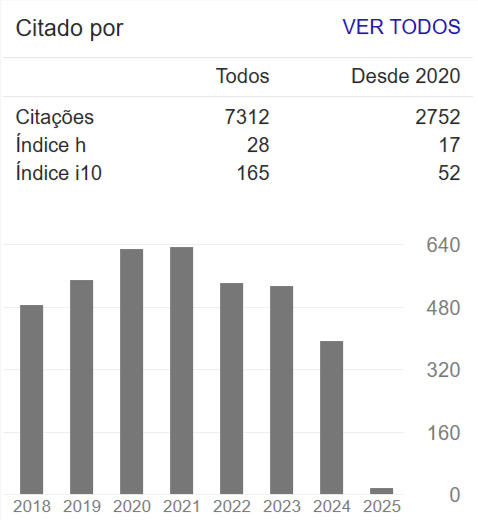Identification of adulterations in activated bone charcoal used for groundwater defluoridation by NIRS-PLS-DA
Abstract
The water defluoridation with excess of fluoride ions is essential for public health, considering in accordance to Consolidation Ordinance 05 of 2017 of the Ministry of Health, the water ingestion with fluoride concentrations above 1.5 mg L-1, can cause dental fluorosis in children. Among the techniques used for defluoridation, the adsorption method using activated bone carbon is one of the most used. Thus, this research aimed at determining the effectiveness of activated charcoal from bovine bone, as well as vegetal and mineral charcoal for water defluoridation, using chemometric tools to identify possible adulterations in the activated bone charcoal. Thus, a factorial design was performed to mix three components and adsorption tests. Near-infrared spectroscopy (NIRS) was used to build a model of discriminant analysis by partial least squares (PLS-DA). The results showed that the activated bone charcoal is the most efficient material for defluoridation, with an adsorption capacity of 1.21 ± 0.06 mg g-1 (n = 3), significantly higher than the adsorption capacity of vegetal and mineral charcoal (p < 0.05). Adulterations in the activated charcoal from bovine bone were identified using the discriminant analysis, indicating that NIRS-PLS-DA is an efficient alternative for the characterization and identification of these adsorbents for water treatment systems.

















